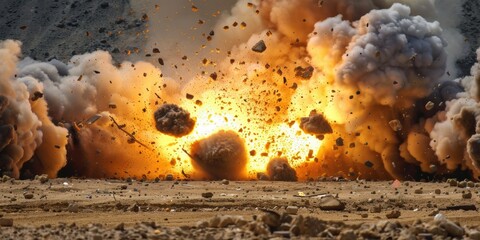The following article has been generously contributed by Tess Pennington of Ready Nutrition. Tess is a preparedness professional whose mission is to introduce easy to understand concepts and strategies for dealing with disasters and emergencies, be they man-made or natural. She is formally trained in emergency and disaster management response with the American Red Cross.
Editor’s Note: In today’s emergency preparedness article, Tess Pennington deals with the “S” in SHTF. Though most preppers take the time to store water, food and preparedness gear, many fail to consider essential sanitation preparedness. Whether you are in a rural area, or in the city, sanitation will play a major role in your overall health and well being. Investing some time and energy into learning basic sanitation practices now will significantly reduce the potential for disease in your immediate vicinity if the SHTF – and your living area might smell nicer, too.
It is a documented fact that more people die after a disaster due to poor sanitation than from the disaster itself. This is due to individuals not knowing where or how to properly expel waste. Fly infestations also pose a problem, and if waste is left out in the open, then it will only lead to the susceptibility of epidemics such as cholera, typhoid or diphtheria. The survivors of the earthquake that occurred in Haiti last year are dealing with this very problem.
Hundreds Have Died From the Haitian Cholera Epidemic
The Haitian earthquake survivors are not only reconstructing their city and their homes, but are dealing with a cholera epidemic due to unsanitary conditions after the earthquake occurred. As of November 2010, 4,764 Haitians have contracted cholera, and 337 have died as a result (Source). In fact, news sources have reported this epidemic outbreak to be the worst they have seen in 20 years. This epidemic broke out due to people being uneducated on how to properly dispose of waste. In all honesty, most everyone is uneducated on this subject, because our town’s and city’s waste management teams do the job for us. But if an emergency arises and the water and sewage systems are corrupted, then your waste becomes your responsibility.
In an article regarding this subject, emergency preparedness author, Kellene Bishop of Preparedness Pro has this to say, “If you don’t take emergency sanitation seriously, then the consequences can be extremely dire – even up a 50 mile radius. Preventing waste from contaminating the soil is just as important as preventing the spread of any other disease as it contaminates crops, water, and air. Additionally, as water will be scarce in a time of emergency, ensuring that it does not get contaminated with improper sanitation habits is critical.
Diseases such as cholera , are contracted through contaminated water and food, and often as a result of poor hygiene and sanitation practices. It causes acute diarrhea and vomiting. If left untreated, it can quickly lead to serious dehydration and death. Women and children are usually the most effected, and become dehydrated more quickly. In fact, UNICEF reports that “poor hygiene, and unsafe drinking water claim the lives of 1.5 million children under the age of five every year.”
Add a Sanitation Kit to Disaster Supplies
Having a sanitation kit that is ready in times of disaster is essential to keeping your family and neighbors healthy. These kits can fit comfortably into a bucket, are affordable, and will not take up much space. Additionally, being educated on how to properly dispose of waste is a key factor in keeping everyone healthy during a disaster.
Some suggested sanitation supplies to add to any short or long term emergency kits are:
- Disposable bucket or luggable loo
- Toilet paper
- Rubber gloves
- Garbage bags with twist ties ( for liners of toilets or luggable loo)
- Bathroom cleaner
- Cat Litter or absorbent material such as saw dust or dirt
- Baby wipe
- Baking soda can be used to help eliminate odors
- Vinegar
- Shovel
Disposal of Waste
Properly disposing of waste products keeps water sources clean and cuts down on illness and disease. If city water is still available, flush conservatively. Grey water such as used dish water, bath water or water for cooking can be used to flush the toilet. If water lines are damaged, or if damage is suspected, do not flush the toilet.
In a short term emergency situation
If water services are interrupted, an easy way to utilize the toilet and keep it clean is to:
- Clean and empty the water of the toilet bowl out.
- Line the bowl with a heavy-duty plastic bag.
- Once the bag has waste inside, add a small amount of deodorant such as cat litter, as well as disinfectant and securely tie the bag for disposal.
- A large plastic trash can (lined with a heavy duty bag) can be used to store the bags of waste.
- Once trash services begin, the city will come and collect these.
If a portable camp toilet is used, the above mentioned can also be used. However, if the trash crews are not coming in a given amount of time, the bag of waste will need to be buried (see the proper way to bury waste below).
Officials say to avoid burying your waste, but sometimes it is necessary. However, if waste is not properly taken care of, pollution of water sources will lead to illness and disease. It also attracts flies and insects which will spread the disease further. Understand that burying feces takes up to a year to decompose. Therefore, finding the right spot to bury your feces is crucial. There are biodegradable bags that a person can put their waste into. These can usually be found in the camping department of outdoor stores, or on the Internet. The bags assist the waste in decomposing faster and assists in preventing the waste from hitting major water sources. If a person does not have one of these handy bags available, the feces should be buried in “catholes” far away from water sources, campsites and communal spot where there are a lot of humans.
According to Leave No Trace, there are some considerations when choosing a site to bury waste.
- Select a cathole site far from water sources, 200 feet (approximately 70 adult paces) is the recommended range.
- Select an inconspicuous site untraveled by people. Examples of cathole sites include thick undergrowth, near downed timber, or on gentle hillsides.
- If camping with a group or if camping in the same place for more than one night, disperse the catholes over a wide area; don’t go to the same place twice.
- Try to find a site with deep organic soil. This organic material contains organisms which will help decompose the feces. (organic soil is usually dark and rich in color.) Refer to the jars used to demonstrate decomposition. The desert does not have as much organic soil as a forested area.
- If possible, locate our cathole where it will receive maximum sunlight. The heat from the sun will aid the decomposition.
- Choose an elevated site where water would not normally runoff during rain storms. The idea here is to keep the feces out of water. Overtime, the decomposing feces will percolate into the soil before reaching water sources.
Disposal of Feminine Napkins
It is important to properly dispose of sanitary napkins, as they contain bodily fluid that could pose a health hazard to others. Methods of disposal may differ according to where you are are and what you have available. However, tampons and feminine napkins do not decompose quickly. Therefore, the best way to dispose of used feminine napkins tampons is to burn them. The fire must be very hot in order to thoroughly destroy the used items.
In a long term emergency situation
Sanitation in a long term disaster will require the same type of sanitation supplies in a short term disaster, however, a more permanent structure needs to be in place for long term use. Below is a video of an example of a long term latrine. In fact, this is a compostable latrine. One that can be made for any household and utilized in such a way that can be beneficial to the environment.
In Summation
Sanitation is a dirty subject that no one really wants to talk about. But it is an often overlooked aspect of emergency preparedness. When a disaster creates a situation where the water sources are compromised, the lack of sanitation in the given disaster area will be a disaster in itself. A 50 mile radius of individuals could be affected by illness and disease. Prepare appropriately for this aspect of disasters in order to prevent the spread of communicable diseases.
The following article has been generously contributed by Tess Pennington of Ready Nutrition. Tess is a preparedness professional whose mission is to introduce easy to understand concepts and strategies for dealing with disasters and emergencies, be they man-made or natural. She is formally trained in emergency and disaster management response with the American Red Cross.
Additional Reading:
WHO Handout on Emergency Sanitation
National Terror Alert Information on Sanitiation in an Emergency










0 Comments